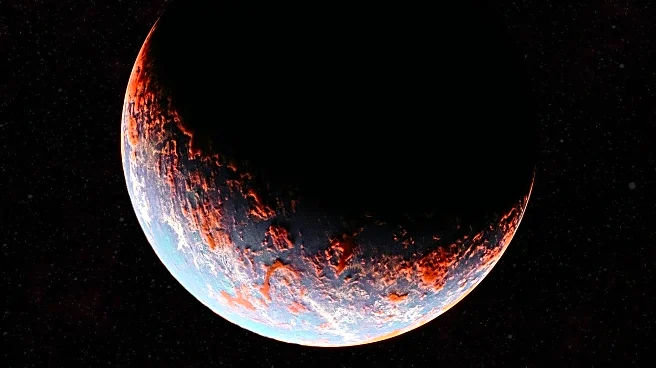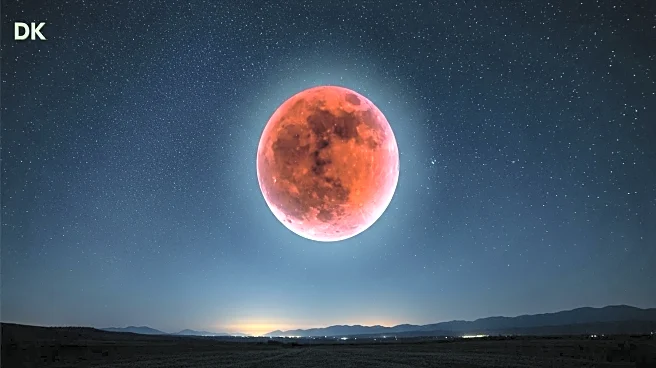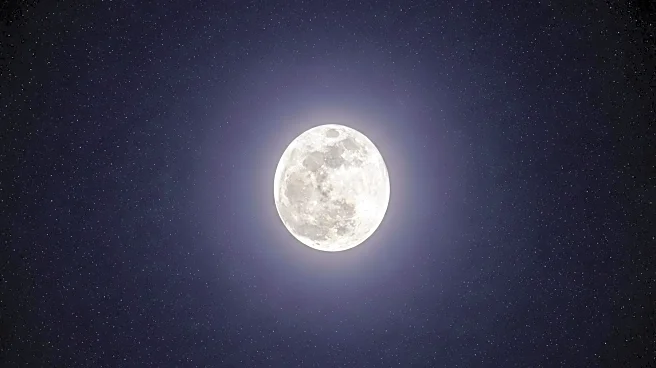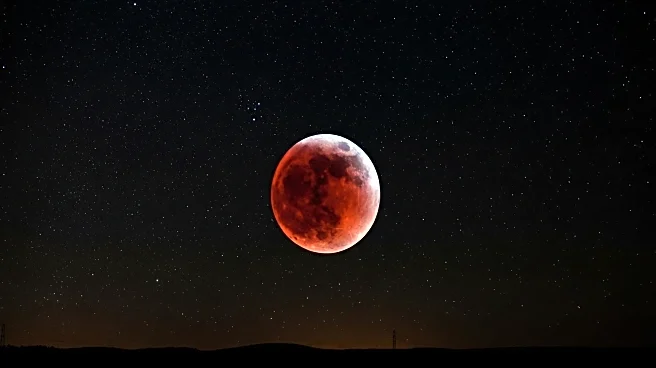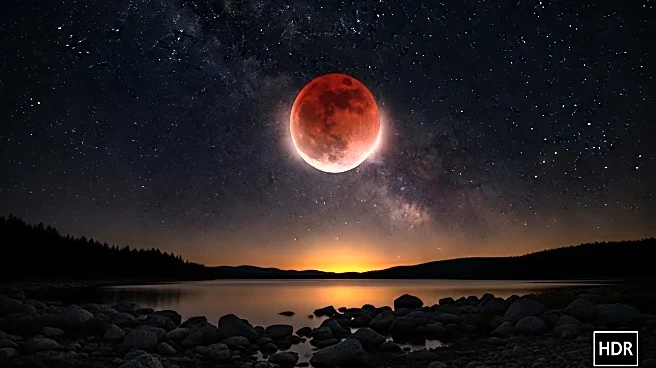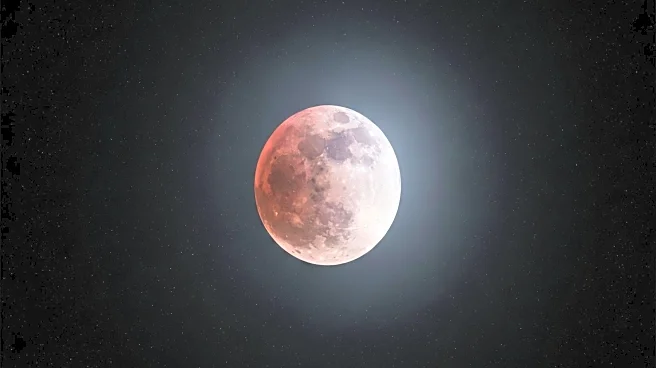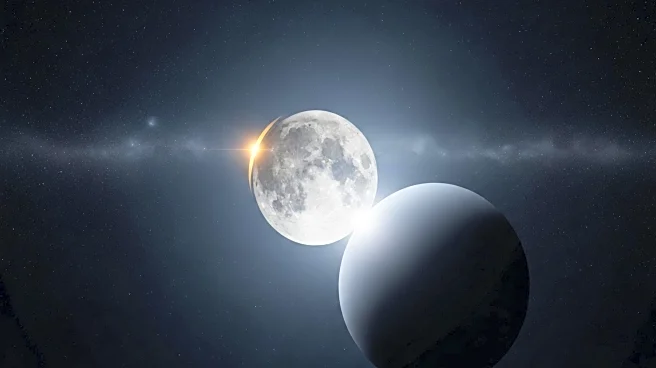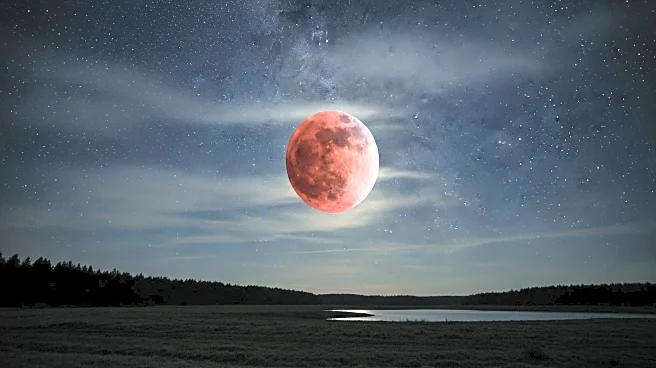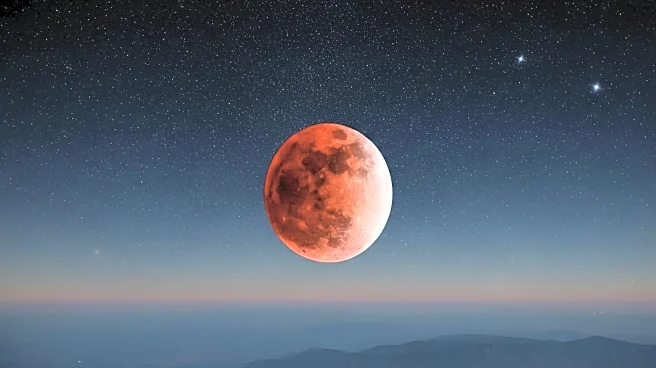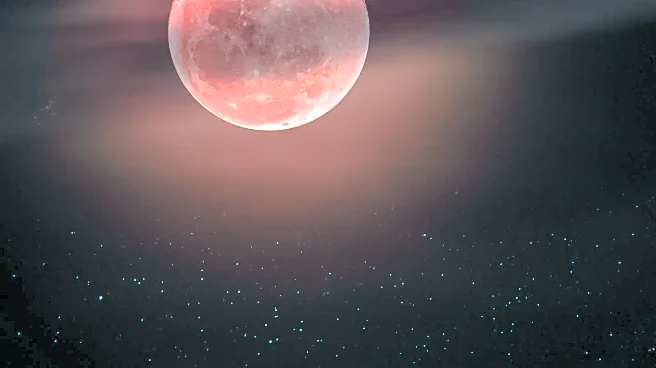What's Happening?
On September 7, 2025, a rare blood moon total lunar eclipse occurred, captivating skywatchers worldwide. The event was visible to approximately 5.8 billion people across various continents, including Antarctica, Australia, Asia, Europe, and Africa. During the eclipse, Earth positioned itself directly between the sun and the moon, casting a shadow that resulted in dramatic shades of red and orange on the moon's surface. This phenomenon, known as a 'blood moon,' is caused by Earth's atmosphere bending sunlight and scattering cooler colors, leaving fiery reds visible. The eclipse lasted for an unusually long duration of 82 minutes, from 1:30 p.m. to 2:52 p.m. ET. The next total lunar eclipse is scheduled for March 2, 2026.
Why It's Important?
The blood moon lunar eclipse is significant for both scientific and cultural reasons. Scientifically, it provides astronomers and researchers with opportunities to study the Earth's atmosphere and its effects on light scattering. Culturally, such celestial events have historically been associated with various myths and beliefs, often seen as omens or significant occurrences. The widespread visibility of this eclipse allowed millions to experience a rare astronomical event, fostering interest in space and science. Additionally, the event's timing with the Corn Moon, traditionally linked to harvest time in North America, added cultural significance.
What's Next?
Following the blood moon lunar eclipse, a partial solar eclipse is expected on September 21, 2025. These eclipses are part of a series that includes both lunar and solar events. The next total lunar eclipse visible in North America will occur in March 2026, providing another opportunity for skywatchers and scientists to observe and study these phenomena. As interest in astronomy grows, educational and public outreach efforts may increase, encouraging more people to engage with and learn about celestial events.
